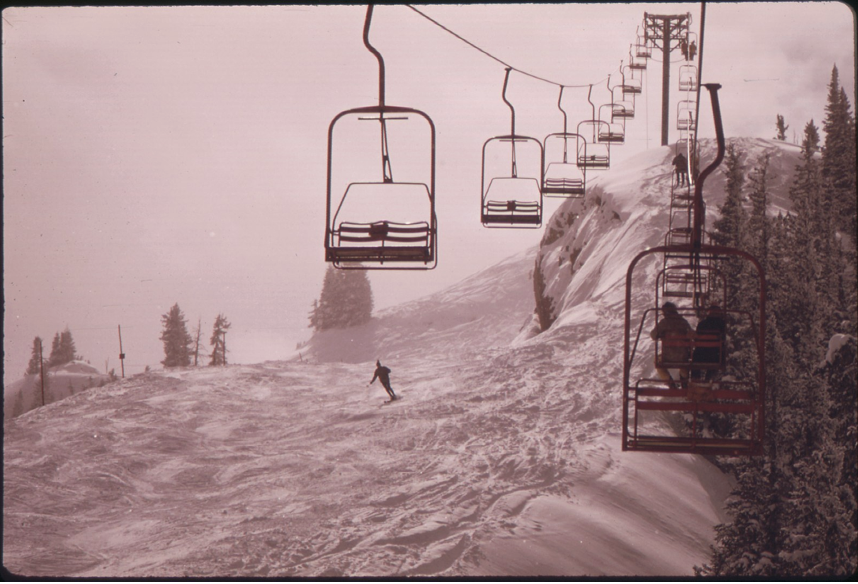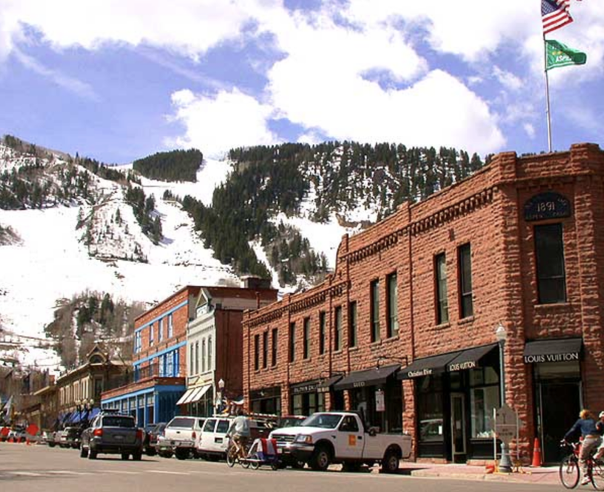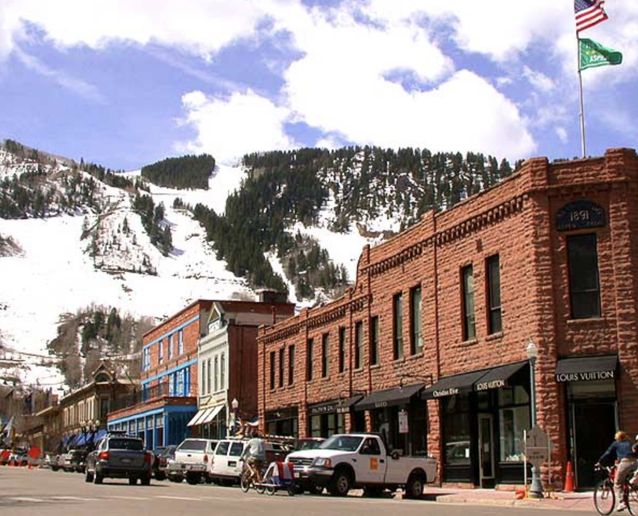The Two Sides of Aspen: A Tale of Wealth and Poverty
It’s a typical Monday morning in mid-December. Five buddies fly private to Aspen and stay at one of their friend’s $10 million, 10,000 square foot home for 10 days – it’s called the “10-10-10 Rule” for a reason. This is how the 1% lives, but what about the other 99%?
For many low-income workers, Monday morning in mid-December is the start of the grueling work week. Most workers commute from towns 30-80 miles outside of Aspen because it is unaffordable to live there. As snowcat drivers at Snowmass, bartenders at the Caribou Club, or housekeepers at Hotel Jerome, these people work twelve-hour shifts and make pennies on the dollar. Even middle-income locals who have lived in Aspen for generations have mixed feelings about the influx of wealth in the area. What was once a small mining town has become a world-class tourist destination that attracts roughly 1.5 million visitors annually. As a consequence of Aspen’s allure, the overall cost of living in the area has increased, resulting in an affordable housing crisis. Nowadays, the median home price in Aspen is $4 million while the median income is a mere $73,000.
Local government institutions, such as the Aspen City Council and Aspen/Pitkin County Housing Authority (APCHA), have recognized the economic disparities in Aspen and sought to correct this through legislative actions. Despite their positive intentions, these pieces of legislation have been controversial and, at times, have had unintended consequences, such as the displacement of low-income populations. There have been three major pieces of legislation of the past 50 years that have addressed the affordable housing crisis in Aspen – a crisis that was recognized decades ago and has been escalating ever since.
1966 Aspen Area Master Plan
The Aspen Skiing Company was founded in 1946 and established Aspen as a ski resort town and tourist destination. As a result of this, Aspen’s population increased by 44% from 1,600 residents in 1950 to 2,300 residents in 1960. The Aspen City Council recognized the ramifications of this rapid population growth. In the 1966 Aspen Area Master Plan, the Council sought to preserve Aspen’s unique character, while encouraging economic development. Its plan recommended revisions to the city and county zoning codes that regulated construction, the preservation of public parks and open spaces, and the development of affordable housing.
The plan was controversial. A few months after the plan was proposed, a public hearing was held by the Aspen City Planning and Zoning Commission to provide a platform for community members to voice their concerns. According to the meeting minutes, Jerry Brown, chief author of the plan, believed that, without regulations, housing for low-income residents would cease to exist. Other people, such as real estate agent Luke Anthony opposed the plan, arguing that zoning regulations would restrict their right to use their land as they see fit. When developers built new condominiums, they had to reserve a certain number of affordable housing units. Additionally, developers could only raise building height or increase the density of their new constructions in exchange for providing affordable housing units. Eventually, after much debate, the City Council decided to approve the plan.
However, there were several issues with the plan after it was enacted. According to Fritz Benedict, architect of Snowmass, the plan lacked a clear definition of “residential” development. Despite the fact that the plan suggested particular locations for residential construction, it did not specify whether such locations were meant for single-family homes, apartments, or other kinds of residential development. Wealthier people took advantage of this loophole and bought second-homes, resulting in 65% of the homes in Aspen being purchased by second-home owners. Because of this, the prices of homes naturally increased and thus locals and workers could not afford to live in the area. A further issue with the plan was that it was difficult to enforce and implement, as the City Council had only limited jurisdiction and inadequate resources. Building affordable housing was difficult because the City lacked funding for housing projects and land was scarce, as most of it was privately owned. Ultimately, despite these drawbacks, the 1966 Aspen Area Master Plan was an influential document that guided development in Aspen.

1976 Pitkin County Land Use Code
Although there were regulations to curb growth, Aspen continued to expand and developers continued to build new residential and commercial structures. Many outspoken political figures recognized that this growth was excessive and campaigned on this issue; in fact, County Commissioner Joe Edwards’ campaign in 1970 was primarily based on the idea of restricting the size and height of homes, protecting mountain views, and prohibiting commercial development outside of certain boundaries. And in 1976, the Land Use Code was adopted to establish stricter guidelines for limiting housing development.
The 1976 Pitkin County Land Use Code was a 200-page document that consolidated Pitkin County’s zoning and subdivision regulations to facilitate review of new construction/development. According to Karen Smith, a member of the Planning Office who spent two years writing the code, “it takes the emotionalism out of reviewing developments.” Provisions of this code specified the ratio of open land to developed land on a piece of property, maximum height limits for buildings, and an exact percentage of units to be set aside for affordable housing. According to a report by the City of Aspen, the code had a significant impact on the rate of housing growth in the area. Between 1960 and 1970, Pitkin County saw an increase in housing units of 184 per year. Following the approval of the 1979 Pitkin County Land Use Code, the growth rate was capped at 50 units annually. This code slowed down development and preserved the area’s unique character and natural beauty. Concurrently, more affordable housing units were constructed at the time.
Subsequently, amendments were made to the code, such as the Transferable Development Rights (TDR) program in 1984 and the Residential Growth Management Quota System in 1993. Arguably, the most controversial amendment was in 2016, when a land-use moratorium was implemented. This gave the city and planning staff time to update the outdated code. This moratorium temporarily halted the issuance of new housing development applications, which sparked division among residents, developers, and local officials. While wealthy individuals supported the moratorium because it was essential for protecting Aspen’s distinctive character, lower-income individuals opposed the moratorium, arguing that it delayed affordable housing projects. In summary, the 1976 Pitkin County Land Use Code and its subsequent amendments sought to strike a balance. This code aimed to preserve the unique nature of Aspen by limiting the rate of growth of new developments, while allowing for the development of affordable housing projects.

1979 Real Estate Transfer Tax
To finance the acquisition of affordable housing units, the City of Aspen enacted the 1979 Real Estate Transfer Tax (RETT). This tax collected money from sellers based on the sales prices of the real estate transaction (roughly 1-2%). Data from the City of Aspen has shown that since the introduction of the tax, $270 million in revenue has been generated for the city of Aspen. In 2020 alone, this tax generated $10.2 million in revenue, of which a significant portion of this revenue went to affordable housing. As a result of the money collected from this tax, more than 3,000 affordable housing units have been developed.
The primary benefit of this tax was that it encouraged long-term investment and discouraged short-term transactions. Homeowners were disincentivized to sell because they would incur a transfer tax in addition to other fees associated with selling their home. Because of the 1979 Real Estate Transfer Tax, homeowners were less willing to sell their homes and thus there was a shortage of houses on the market. At the time, Aspen’s housing market was booming, which meant that high demand and low supply increased the price to build. Thus, there was a decrease in the number of affordable housing units built.
Although there was support for the 1979 Real Estate Transfer Tax, it still remains a contentious topic in Aspen. More recently, in 2012, a referendum initiative was implemented to raise the tax from 1% to 2%, with the extra money going towards building more affordable housing units. While some locals claimed that the tax would make selling property in Aspen even more expensive, others believed that it was necessary for affordable housing development. Ultimately, voters passed the bill in spite of this opposition, showing a continuous commitment to tackling Aspen’s affordable housing crisis. Overall, the 1979 Real Estate Transfer Tax has been a significant source of funding for affordable housing in Aspen, generating millions of dollars for affordable housing developments. However, by disincentivizing the sale of homes, it has perhaps not lived up to the expected revenue generation numbers.
The Problem of Affordable Housing Today in Aspen
The issue of affordable housing in Aspen persists to this day. The median home price in Aspen is over $4 million, which makes it nearly impossible for people to afford to live there.
Fortunately, the 1966 Aspen Area Master Plan was the first step taken by the City to develop affordable housing and regulate growth in the area. Despite its drawbacks, it set the stage for future legislation and started the conversation about affordable housing in Aspen. In 1976, the Pitkin County Land Use Code was introduced to provide a comprehensive document of regulations and procedures for building new developments. And in 1979, the Real Estate Transfer Tax was passed to generate money for the City of Aspen, which could be allocated towards affordable housing projects. Ultimately, these three pieces of legislation have been influential in moving Aspen towards a more affordable housing market.
In response to today’s ongoing issue of affordable housing, various solutions have been proposed. One solution has been to increase the percentage of affordable housing units in new developments. A second solution has been to take a regional approach to affordable housing by collaborating with nearby areas to develop comprehensive housing strategies. There have also been more innovative solutions such as building tiny homes and modular housing.

Today, a number of affordable housing units in Aspen have been built, including apartments, condominiums, and townhouses. Many of these developments are only a few miles away from the city’s center and accessible through public transportation. One of the more recent affordable housing developments, Lumberyard, is in the final public review process from the Aspen City Council. This affordable housing development plans to have 277 deed-restricted housing units, with construction set for 2024. Although the exact prices of these units have not been announced, they will likely be market competitive. For example, a one-bedroom apartment at Burlingame Ranch, a large-scale affordable housing development, ranges from $1,300 to $1,600 per month. To purchase a one-bedroom apartment at Burlingame Ranch will cost roughly $150,000.
While there have been many proposed solutions, the issue of affordable housing in Aspen remains complex and multifaceted. Affordable housing development continues to face opposition from community members who are pro-NIMBYism (“Not in My Back Yard”), which highlights the challenges of implementing affordable housing projects in Aspen. Recently, Governor Jared Polis, a libertarian Democrat, has proposed the essential dissolution of the 1976 Land Use Code and similar legislation in other Colorado communities. He has suggested this move to promote economic growth across the state at the expense of other legitimate concerns, including the issue of affordable housing. But the issue of affordable housing is not unique to Aspen and, in reality, is not unique to wealthy resort towns. Affordable housing is a concern in most large American cities that have become prohibitively expensive.
Acknowledgments
Thank you to Dr. Miller for a great class this semester. I would also like to thank Ms. Chella Vaidyanathan for her help with this project.
References
Albrecht, Don E. “Amenity and Tourism Communities.” In Building a Resilient Twenty-First Century Economy for Rural America, 113–22. Boulder, CO: University Press of Colorado, 2020.
Been, Vicki. “Impact Fees and Housing Affordability.” Cityscape 8, no. 1 (2005): 139–85. http://www.jstor.org/stable/20868573.
“Citizens Discuss Plan at Hearing.” The Aspen Times (Aspen, CO), April 16, 1966. https://www.coloradohistoricnewspapers.org/?a=d&d=ATW19660407-01.2.62&srpos=5&e=–1966—1977–en-20–1-byDA-img-txIN%7ctxCO%7ctxTA-Aspen+City+Planning+and+Zoning+Commission+%22hearing%22-ARTICLE——0-Pitkin-Aspen—-.
Farrell, Justin. Billionaire Wilderness: The Ultra-Wealthy and the Remaking of the American West. Princeton, NJ: Princeton University Press, 2020.
Golding, Shaun A. “Gentrification and Segregated Wealth in Rural America: Home Value Sorting in Destination Counties.” Population Research and Policy Review 35, no. 1 (2016): 127–46. http://www.jstor.org/stable/26158803.
Laitos, Jan G., and Heidi Ruckriegle. “The Problem of Amenity Migrants in North America and Europe.” The Urban Lawyer 45, no. 4 (2013): 849–914. http://www.jstor.org/stable/24392647.
Pollakowski, Henry O., and Susan M. Wachter. “The Effects of Land-Use Constraints on Housing Prices.” Land Economics 66, no. 3 (1990): 315–24. https://doi.org/10.2307/3146732.
Richey, E. Duke. “The Aspenization of Telluride: Coming of Age and Mythologizing Change in Ski Country, 1945-1985.” Pacific Historical Review 79, no. 2 (2010): 231–64. https://doi.org/10.1525/phr.2010.79.2.231.
Rosser, E. Michael, and Diane M. Sanders. “The Age of Great Developers and Changing Land Uses.” In A History of Mortgage Banking in the West: Financing America’s Dreams, 185–210. Boulder: University Press of Colorado, 2017.
Shaw, Randy. “Millennials Battle Boomers Over Housing.” In Generation Priced Out: Who Gets to Live in the New Urban America, 1st ed., 157–86. Berkely: University of California Press, 2018. http://www.jstor.org/stable/10.1525/j.ctv5cgbsh.10.
Sidney, Mara S. “The Struggle for Housing Equality: Impact of Fair Housing and Community Reinvestment Laws on Local Advocacy.” Cityscape 7, no. 1 (2004): 135–63. http://www.jstor.org/stable/20868563.
Stuber, Jenny. “Aspen and the American Dream.” Contexts 19, no. 2 (2020): 34–39. https://www.jstor.org/stable/27059733.
Theodos, Brett, Claudi J. Coulton, and Rob Pitingolo. “Housing Unit Turnover and the Socioeconomic Mix of Low-Income Neighborhoods.” The Annals of the American Academy of Political and Social Science 660 (2015): 117–35. http://www.jstor.org/stable/24541830.
Wyckoff, William, and William Cronon. “Ski Towns.” In How to Read the American West: A Field Guide, 364–67. Seattle: University of Washington Press, 2014.

